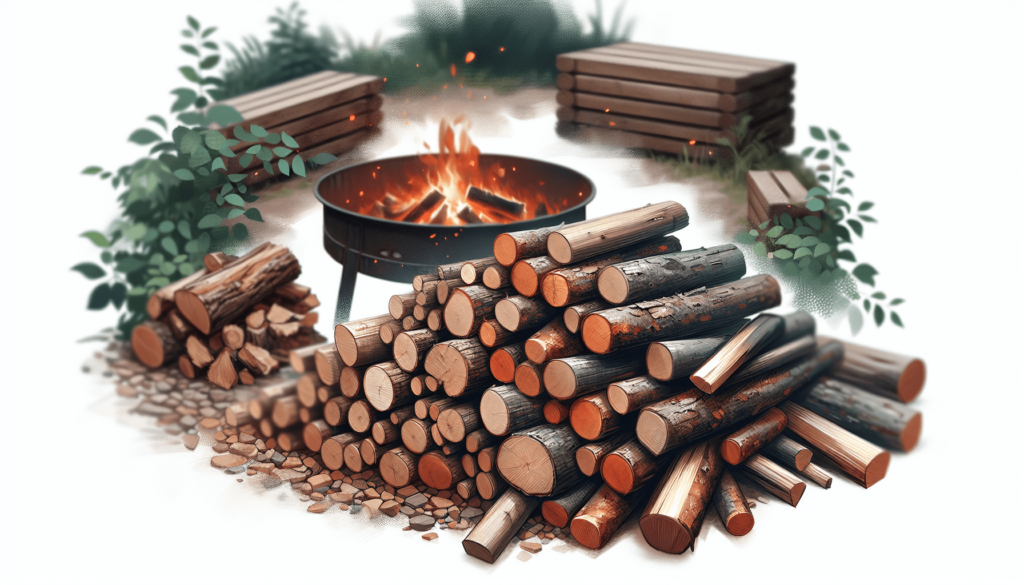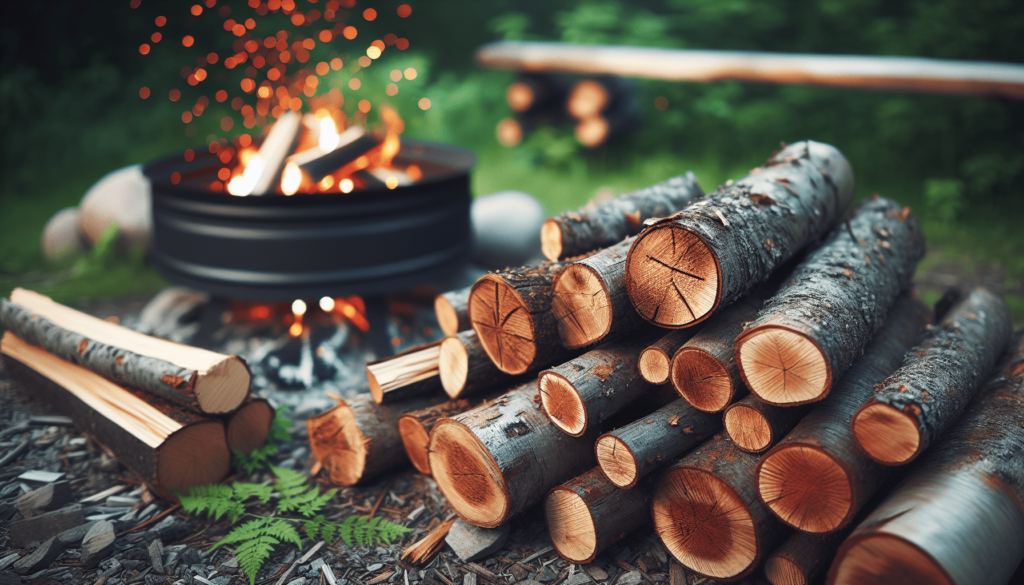Is it hard to burn wood?
It’s one of those questions that might seem straightforward at first glance, but the more you think about it, the trickier it gets. Do I know everything there is to know about burning wood? Probably not. I mean, I know that if you throw a match onto a stack of dry twigs, you’ll likely get a fire. But is that all there is to it? Let’s peel back the layers, shall we?
Why Burn Wood?
So, why do we even bother burning wood in the first place? For most of human history, wood has been our trusty sidekick. It heats our homes, cooks our food, and creates an ambience that electric fireplaces just can’t match.
Historical Perspective
Think of those picturesque scenes in movies where families huddle near the hearth. That hearth wasn’t just for show; it was the nucleus of home life, providing warmth and a means to prepare food. Our ancestors didn’t have the luxury of gas stoves or electric ovens.
Modern Uses
Fast forward to today, and many of us still burn wood. Whether it’s for the crackling fire at a campsite, the smell of a wood-fired pizza, or simply the eco-friendly alternative to other heating methods, wood remains relevant. So, is it hard to burn wood? Let’s break it down.
Types of Wood
There’s more to wood than meets the eye. You wouldn’t throw particleboard into your fireplace and expect gourmet s’mores, would you? Different types of wood burn differently, and understanding these distinctions can make the whole process easier.
Hardwood vs. Softwood
Let’s start with the two main categories: hardwood and softwood.
| Hardwood | Softwood |
|---|---|
| Denser, burns longer and hotter | Lighter, burns quickly and is easier to ignite |
| Ideal for long-lasting heat | Great for kindling and quick fires |
| Examples: Oak, Maple, Ash | Examples: Pine, Fir, Cedar |
Seasoned vs. Green Wood
This one’s crucial. Freshly cut, or “green,” wood contains about 50% moisture, making it close to impossible to burn efficiently. Seasoned wood, on the other hand, has been dried out, typically over six months to a year. Trust me; you’ll notice the difference when you try to light it.

The Science of Burning Wood
Let’s geek out for a moment. At its core, burning wood is all about a chemical reaction known as combustion. When wood heats up to around 300 degrees Fahrenheit, it starts to break down into flammable gases and tar. These gases mix with oxygen to create flames, and voilà, you have a fire!
The Three Components of Fire
I remember learning this back in science class: the fire triangle. For a fire to burn, it needs three things.
- Heat: To get the wood to its ignition point.
- Fuel: The wood itself.
- Oxygen: Helps sustain the combustion process.
Remove any one of these, and your fire’s out.
Steps to Burn Wood
Okay, I know what you’re thinking: “Just tell me how to get a good fire going!” Alright, let’s break it down.
Gather Materials
Before anything else, you need the right materials. Think of it as prepping for a meal. You wouldn’t start cooking without your ingredients, would you?
- Tinder: This is the easy-to-ignite material. Think dry leaves, paper, or small twigs.
- Kindling: Slightly larger than tinder, kindling catches fire quickly but burns longer. Thin sticks or small branches work great.
- Logs: Finally, you need your larger pieces of wood, ideally seasoned hardwood for a long-lasting fire.
Building the Fire
There are multiple ways you could stack the wood, but here are two tried-and-true methods.
| Method | Description |
|---|---|
| Teepee | Arrange your tinder in the center. Lean your kindling sticks around it to form a teepee. Once it’s lit, add your larger logs in a similar fashion. |
| Log Cabin | Place two larger logs parallel to each other. Lay smaller kindling across them in crisscross fashion, like building a mini log cabin. Place tinder in the middle and light it up. |
Lighting the Fire
If you’ve set up your materials properly, lighting the tinder should get things going. A match or a lighter usually does the trick, but if you’re feeling adventurous, you could try the classic flint and steel method.
Maintaining the Fire
Once you’ve got the fire going, don’t just sit back and relax. Fires need tending. Keep adding larger logs as the fire burns through the kindling. Make sure the fire gets enough oxygen by adjusting the log placement and occasionally stoking it.

Common Problems and How to Solve Them
Even with the best-laid plans, things can go awry. Here are some common problems and how you can solve them.
Problem: Smoking Fire
There’s nothing worse than a fire that smokes like a chimney. It could be because your wood is too green. Remember, seasoned wood is the key. Also, make sure your fire gets enough oxygen.
Problem: Fire Dies Quickly
Going through matches like candy just to keep the fire going? Ensure you’re using a mix of tinder, kindling, and larger logs. Sometimes, it’s a matter of stacking the wood better to promote airflow.
Problem: Hard to Ignite
If your fire struggles to catch, you may need to reconsider your tinder. Dry leaves, paper, and even those little store-bought fire starters can help.
Environmental Considerations
Let’s not forget our responsibility toward the planet. Burning wood, while potentially eco-friendly, still releases carbon into the atmosphere. However, if done responsibly, it can be a sustainable choice.
The Case for Sustainable Wood
Opting for wood from sustainably managed forests ensures that we’re not contributing to deforestation. Many suppliers now certify that their wood comes from renewable sources.
Air Quality
Burning wood indoors requires a good ventilation system. Modern wood stoves are designed to burn more efficiently and with fewer emissions, making them a better choice for indoor burning.
Alternatives to Consider
Before you load up on firewood, it’s also worth exploring alternatives like pellet stoves or even solar heating. These methods offer a more controlled and often cleaner way to generate heat.
Tools of the Trade
Having the right tools can make all the difference. From axes to moisture meters, here’s a quick rundown:
| Tool | Purpose |
|---|---|
| Axe or Hatchet | To chop wood into smaller, more manageable pieces. |
| Moisture Meter | Measures the moisture content in wood to ensure it’s seasoned properly. |
| Fireplace Grate | Improves airflow beneath your fire, helping it burn more efficiently. |
| Fire Poker | Essential for maneuvering logs and keeping the fire stoked. |
| Wood Storage | Seasoning your own wood? A good storage system that keeps wood off the ground and covered can help it dry out properly. |
Personal Anecdote: My First Fire
I remember the first time I tried to build a fire on my own. Let’s just say it was more of a smoke signal than a roaring blaze. My tinder was too damp, my kindling too sparse, and I definitely underestimated the importance of airflow. It was a humbling experience and taught me that even something as seemingly simple as burning wood has its nuances.
Conclusion
So, is it hard to burn wood? I guess it depends. Once you know the types of wood, understand the science behind combustion, follow the steps, and have the right tools, it becomes much easier. Whether you’re burning wood to heat your home, cook a meal, or create a cozy atmosphere, a little knowledge goes a long way.
Mastering the art of burning wood can be incredibly satisfying and practical. Think of it as a skill you can carry with you, something that connects you to generations before who relied on the same principles for warmth and survival.
So, next time you’re faced with a bundle of logs, remember: it’s not just about throwing them into a pile and hoping for the best. With a bit of preparation and understanding, you can build a fire that not only burns but burns well.
And hey, if you ever find yourself struggling, just think of my smoke signal disaster. It happens to the best of us. Happy burning!

